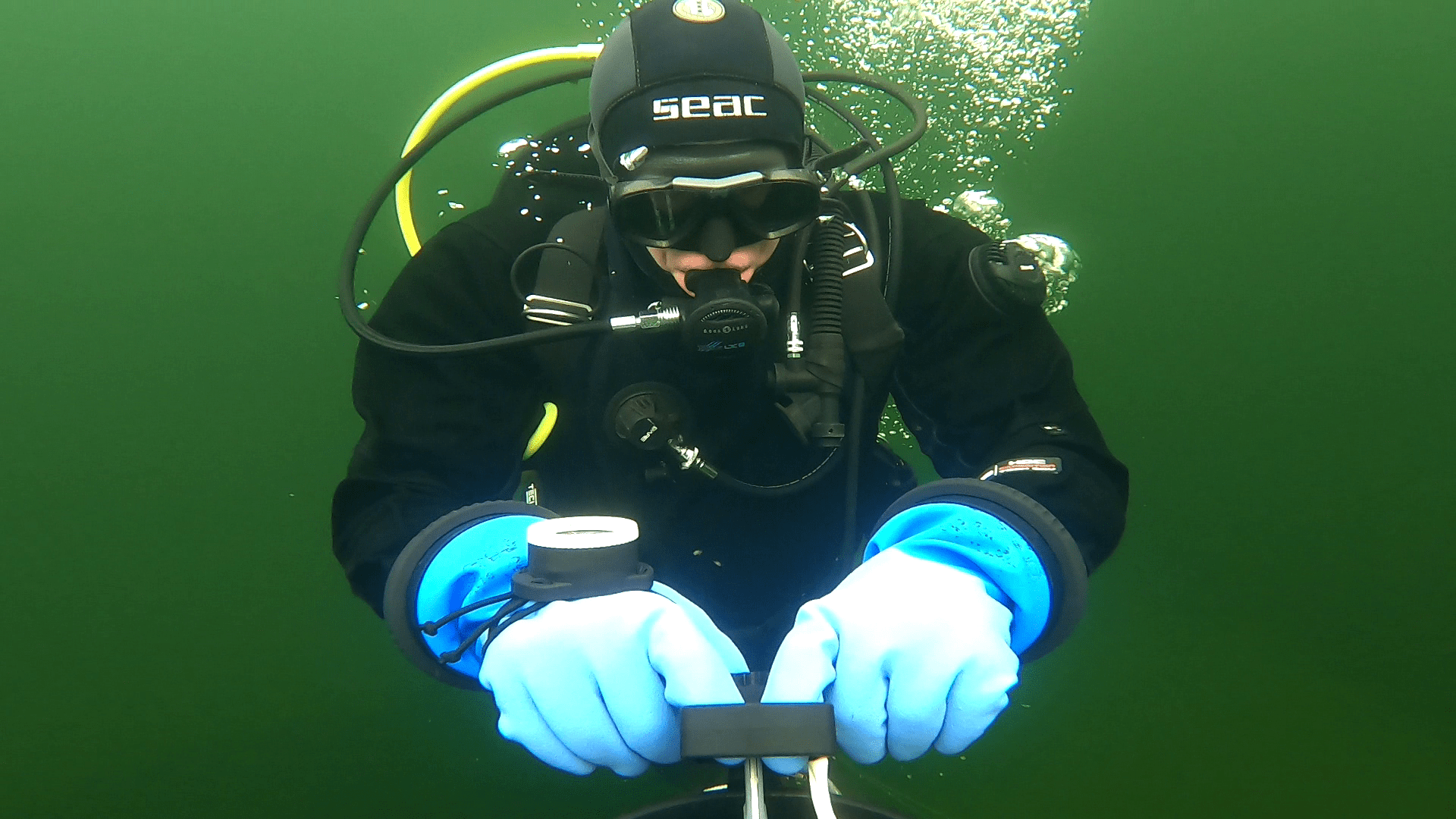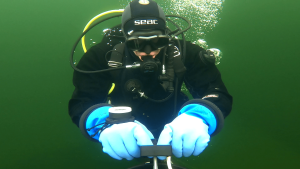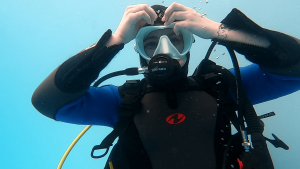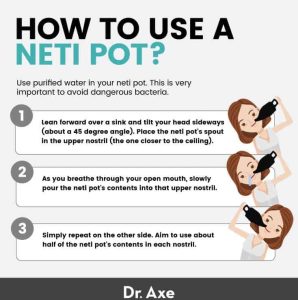Table of Contents
If a diver has a runny nose, is it okay to dive with a runny nose?
It is not recommended to dive with a runny nose, cold or other conditions that can block the air passages of the paranasal sinuses. If difficulty equalizing the pressure in the ears occurs during the descent of the dive, the dive must be stopped. If a diver dives with a runny nose, there may be a moment when the pain in the head prevents the diver from rising to the surface of the water (reverse block). Remember that you can only abort the descent, not the takeoff. To maintain healthy nasal passages, keep them clean with a cannula before diving Neti Pot, you will not cancel any diving event, after a stuffy nose, confirms diving club "Divings", PADI instructor Valters Preimanis.
How to quickly cure a runny nose?
A runny nose can manifest itself in different ways - both as a blocked nose and as a runny nose, sometimes it is accompanied by sneezing, and often these symptoms pass from one to another and change during the course of the disease. In order to successfully cure a runny nose, it is necessary to observe and evaluate the symptoms before starting treatment in order to most accurately determine how to quickly cure a runny nose.
First of all, the cause of the runny nose should be determined - allergies, colds, virus, dry air or even stress. In the case of allergies, rinsing the nose or, in more severe cases, the remedies available at the pharmacy will be useful as the first natural treatment. Excessively dry air in the room can be corrected with an air humidifier, but for viruses and more serious illnesses, the causes must be treated.
If the diver's nose is not clean, clean it and rinse the nose
Neti Pot is a can with the help of which cleans and refreshes the nasal passages. Neti pots are usually plastic or ceramic and resemble a small kettle. Neti pot is of origin in Ayurvedic medicine. “Neti” actually means “cleaning the nose". Using a Neti Pot before diving can provide divers with several benefits.
Five benefits of using a Neti Pot for divers
- Sinus cleansing: diving with blocked sinuses can cause pressure changes in the sinuses that can cause discomfort or even sinus barotrauma. Using the Neti Pot helps flush any excess mucus or debris from the sinuses, promoting clearer nasal passages and reducing the risk of sinus-related problems while diving.
- Improved pressure equalization: Equalizing the pressure in the ears and sinuses is very important for divers to avoid barotrauma. By using a Neti Pot to flush the nasal passages, divers can ensure that the Eustachian tubes are clear, making alignment easier and more efficient during descent.
- Improved breathing: diving also requires airflow through the nose (for example, when cleaning the diving mask) and mouth breathing using a regulator. The Neti Pot can help clear any nasal congestion by providing better airflow and facilitating comfortable and efficient underwater breathing.
- Reduced risk of infections: seawater can contain various microorganisms and bacteria that can cause nasal or sinus infections. By flushing the nasal passages with a Neti Pot, divers can remove potential pathogens and reduce the risk of infection for a healthier diving experience.
- Overall comfort: The Neti Pot can provide a refreshing and soothing sensation, reducing any nasal dryness or irritation that may occur while diving. This can improve the diver's overall comfort and contribute to a more enjoyable and relaxing, stress-free dive.
How does a Neti Pot work?
Designed with a long spout, the can allows the user to pour the nasal rinse into the nostrils to flush out irritants and thin mucus. This usually reduces congestion and makes breathing through the nose easier. Neti pot acts as an enhancer to some extent of your body's natural functions. What do I mean by that? Microscopic, hair-like structures called cilia line the nasal cavity and surrounding paranasal sinuses. Cilia help clear mucus from the nose. Rinsing your nose with saline is said to help the cilia better rid themselves of mucus and unwanted particles (such as dust, pollen, etc.) that often cause sinus problems.
Neti Pot can is filled with purified water and salt or a salt-based mixture specifically designed for use in a Neti pot. It's also very easy to make your own homemade Neti Pot solution (the recipe is available in this article).
You may be wondering why you can't use plain water in yours Neti Pot in a can. An interesting fact is that just drinking water can irritate your nostrils. Adding salt to purified water allows the water to pass through the sensitive membranes of the nasal passages with very little or no burning sensation.
Instructions for use of the "Neti Pot" saline rinse can for cleaning the nasal passages
- Use boiled water or purified water
- The amount of salt should be like tear fluid (half a teaspoon per can).
- Mix the salt well in warm water (in which you can comfortably hold your hand)
- Rinse one nostril and then the other, use the entire contents of the 200ml can on both nostrils
How to use Neti Pot, technical tips
- Lean forward over the sink and tilt your head to the side (about a 45 degree angle).
- Insert Neti Pot the spout in the upper nostril (the one closer to the ceiling).
- While breathing through the open mouth, slowly pour the contents of the neti pot into the upper nostril. You will immediately see the neti pot solution begin to flow from the lower nostril. That's right—the nasal irrigation has officially begun!
- Just repeat on the other side. Try to use about half of the contents of the neti pot in each nostril.
- The whole process doesn't take more than about five minutes, so it's not a big commitment. If you're indoors, you'll definitely want to lean over the sink because your nostrils will leak.
After a little practice, you probably won't get your clothes wet. At first you may have some water spots when you are done. Don't worry, they will dry quickly and will not stain.
If the nasal passages are closed, there are possible risks of ascent - a reverse block is possible for the diver
Sinus barotrauma can also occur during takeoff, called reverse block. Alignment of the auricles during ascent is usually a passive event, meaning that no active attempts are necessary. However, mild swelling and inflammation of the mucous membranes (caused by colds or seasonal allergies) can compromise the narrow passages through which air escapes, trapping gas, mucus and blood. If the sinus fails to drain during ascent, the increased pressure can place significant stress on the sinus mucosal lining and bony walls. As the diver continues to ascend, one of the sinus walls may break into an adjacent sinus that drained properly (the point of least resistance), effectively relieving excess pressure. This type of sinus barotrauma, reverse block, presents as sharp facial pain on ascent, followed by epistaxis or postnasal drip, depending on the sinus cavities involved.
Remember to always follow the correct instructions for Neti Pot use and consult a diving instructor or medical professional if you have any special concerns or conditions related to your paranasal health or diving activities, emphasizes diving club "Divings", PADI instructor Valters Preimanis.
Where to apply for diving training in Latvia?
🤿😀 If you are looking for advice or help on the healthy sport of diving with or without balloons, call a PADI diving instructor t. 220-77-202 (WhatsApp 220-77-202) to find advice on proper human survival in water and freediving related training.





